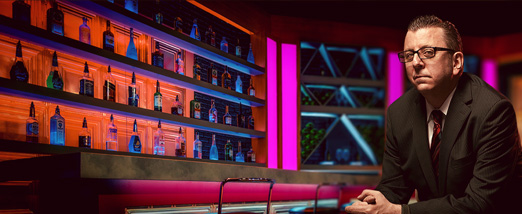LET IT BE: 4 STARS. “reveals a literal band of brothers making art.”
The rarely seen and often misunderstood cinéma verité Beatles documentary “Let It Be,” mostly unseen since the 1980s, is now available on Disney+, courtesy of a remastered treatment from Peter Jackson.
At a brief 81 minutes, director Michael Lindsay-Hogg’s film is a rougher document than its companion piece, the sweeping, textured, 468-minute “Get Back” docuseries Jackson created out of the salvaged outtakes from Lindsay-Hogg’s 1969 shoot.
“Let It Be” is contextless, a fly-on-the-wall document of a band rehearsing and recording songs for their twelfth and final studio album “Let It Be;” allowing the creative sparks to fly and land where they may. It’s of historical interest because those songs, presented here in utero, would go on to become some of the most beloved tunes of the twentieth century, and are performed by Paul McCartney, John Lennon, George Harrison and Ringo Starr, who, at that moment, were the most famous musicians on the planet.
At its release, the film was picked apart by critics like the Observer, who called it “a bore… clumsily edited, uninformative and naïve.” Presented without a storyline, shot on 16 mm and blown up to 35 mm for theatrical release, it was grainy and dark, both visually and in tone.
Released in May 1970, just a month after the band’s very public divorce, “Let It Be” became ground zero for Beatles conspiracists who analyzed the footage, looking for clues as to why the world’s most beloved band blew apart. Was Paul the bad guy? Did Yoko Ono cause a fissure between band members? The movie is singlehandedly responsible for much of the mythology surround the band’s breakup.
But the new film, restored from the original 16mm negative with sparkling remastered sound, reveals something else. There are moments of tension, notably between McCartney and Harrison, but in the new, cleaned up version, the gloom has lifted to reveal a literal band of brothers making art under extraordinary circumstances.
The sessions came just months after the recording of the “White Album,” and were meant to be a return to their roots in the wake of the death of their manager Brian Epstein, press scrutiny and internal tensions. Their relationships may have been frayed by external pressures, but a closer look at ”Let It Be,” free from the furor of the break-up that coloured the 1970 release, reveals the shared joy of creation.
There is a certain level of performance in “Let it Be,” like Paul making love to the camera as he sings an early version of the title track, but mostly what gives the film its punch is that it is an unvarnished look at four very public people at the height of their fame, unencumbered by the spin of publicist or the glare of the spotlight.
